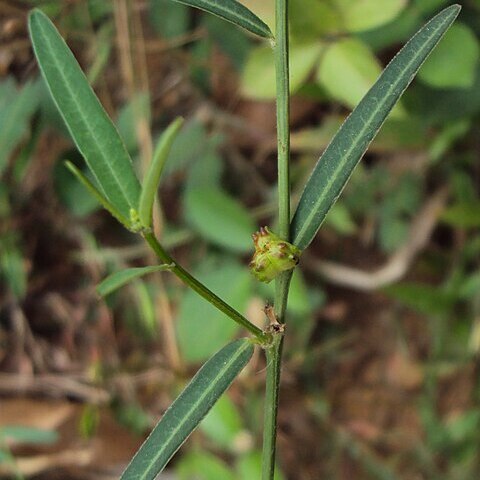Herbs to subshrubs, monoecious; indumentum of multicellular, hyaline hairs, simple [or dendritic]. Leaves alternate, petiolate; stipules often present, small; leaf blade margin serrulate, rarely entire, pinnately veined. Flowers in terminal, axillary, leaf-opposed, or extra-axillary narrow racemes, female flowers often distant from male part; bracts each with 2 basal glands. Male flowers small, 1-3 per bract-axil, subsessile; sepals 3, free or very indistinctly connate at base; petals and disk absent; stamens 3; filaments free; anthers longitudinally dehiscent; pistillode absent. Female flowers: pedicel short to absent; sepals 3, free, usually larger than in male; petals and disk absent; ovary 3-locular; ovules 1 per cell; styles 3, spreading or revolute, free or connate at base. Capsules subglobose, echinate [or smooth], of 3 2-valved cocci. Seeds globose or oblong, carunculate; endosperm fleshy; cotyledon broad and flat.
Herbs [shrubs], annual [perennial], monoecious; hairs unbranched [branched]; latex white. Leaves alternate, simple; stipules present, persistent; petiole present, glands absent; blade unlobed, margins serrulate [entire], laminar glands abaxial, at base [absent]; venation pinnate. Inflorescences appearing unisexual (pistillate and staminate portions usually shortly separated on stem), terminal, leaf-opposed, or axillary, racemelike thyrses; glands subtending each bract [0] 2. Pedicels present, often rudimentary. Staminate flowers: sepals 3, imbricate, distinct [connate basally]; petals 0; nectary absent; stamens 3, distinct; pistillode absent. Pistillate flowers: sepals 3, distinct; petals 0; nectary absent; pistil 3-carpellate; styles [0 or]3, connate basally, unbranched. Fruits capsules, base not persisting. Seeds oblong, ends truncate [elliptic]; outer seed coat dry; caruncle present [absent].

